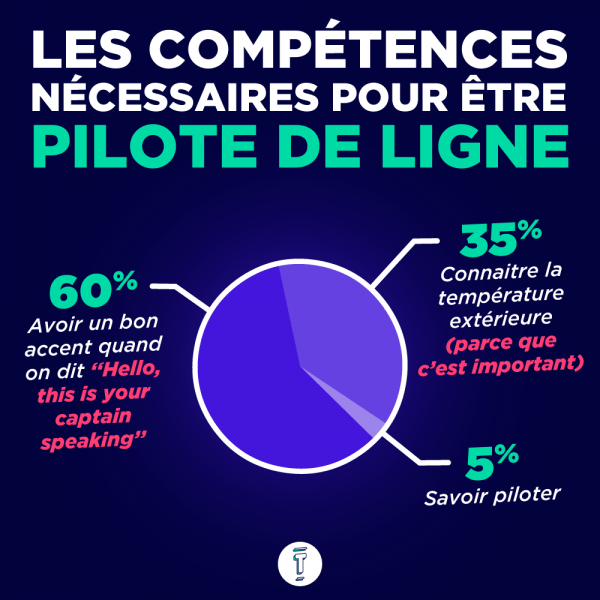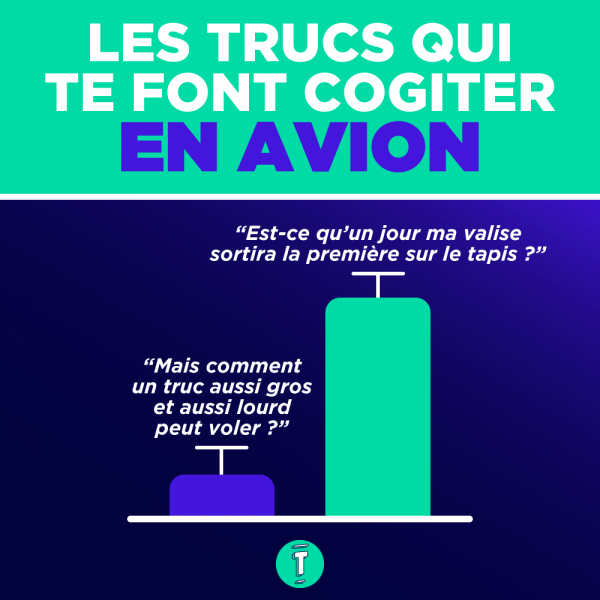The news has just fallen: within three years, the co-pilots may no longer be part of the trip! In order to reduce costs and respond to the lack of personnel, several airlines are asking that the cockpits be made up of only one pilot, compared to two until now. In total, some forty countries have requested it. It is the European Union Aviation Safety Agency which is now in charge of thinking about the new regulations. If the United Nations gives the green light, this restriction could be effective from 2027. Euuuuuh… It’s not just money in life, huh! It’s still more reassuring for air freaks like me to know that our lives are in the hands of two people, rather than just one! It’s important, a co-pilot, ok ???
1. The co-pilot is an airline pilot
The difference is that there is a captain (or captain) and a co-pilot (or “first officer”), but both have the same technical skills. In itself, the only difference is status and experience. They both have their ATP license and all the qualifications required to fly an aircraft. The captain is responsible for the flight and has the authority.
2. He can become a captain later
The co-pilot can be promoted to captain after a certain period of time. In airlines, the function of captain is granted according to seniority and the number of hours flown since the date of recruitment. Typically this is between 3000 and 6000 hours of flight experience.
3. He’s not just there “just in case”
During the flight, the co-pilot has several missions: he generally takes care of radio functions and mechanical surveillance. It assists the pilot, monitors flight instruments, supports radio communications, monitors the position, altitude and direction of the aircraft. He is also called “flight engineer” because he monitors the engine, the fuel and the various systems throughout the trip.

4. … But if there is an incident with the pilot, it is actually him who takes over
The co-pilot ensures passenger safety. He is always ready to take control of the aircraft if the pilot is no longer ready to do so (malaise, urgent desire, fatigue, etc.). In this way, it can also be brought to take off or land.
5. He is also trained in emergency situations
If the pilot requests an emergency landing, the co-pilot takes care of communication with air traffic control to reach the nearest airport, he helps to put on oxygen masks for the crew and passengers in case loss of cabin pressure. He is trained in the use of fire extinguishers, knows first aid gestures, he knows all the emergency exits and is able to help passengers leave the plane in the event of an emergency. CIMER HOW YOU WANT ME NOT TO BE AFRAID IN PLANE AFTER THIS???

6. He always sits in the right seat
Why ? Well because the captain is always on the left! Why is the commander always on the left? Well… Because! It’s good the questions, there? Is it an interrogation or what?
(There are several possible explanations: some think that it facilitates access to the controls, starting from the observation that the majority of them are right-handed; others speak of ease for take-off, approach and departure manoeuvres. landing; others attribute this to a Napoleonic tradition,… BRIEF, the hypotheses are going well (or good plane? lol)!)
7. He never eats the same food as the pilot
In this way, if one of the dishes has small intestinal problems, the pilot in good health can take care of the flight, while his colleague settles on the throne. Safety and tranquility in the toilet above all!

8. You can tell his status by the number of stripes on his shoulder
The first stripe is obtained at the end of the theoretical phase, the second at the end of the ATPL training, the co-pilots have three stripes, and the captains four.
9. There’s a third pilot in the cockpit (and that’s not the name of an American cult comedy)
We know it by the so not reassuring little name of “autopilot”. In other words, the plane drives itself while the pilots can talk about the canteen menu and the quality of the coffees served. The autopilot is only active once the plane has reached cruising altitude, of course.




